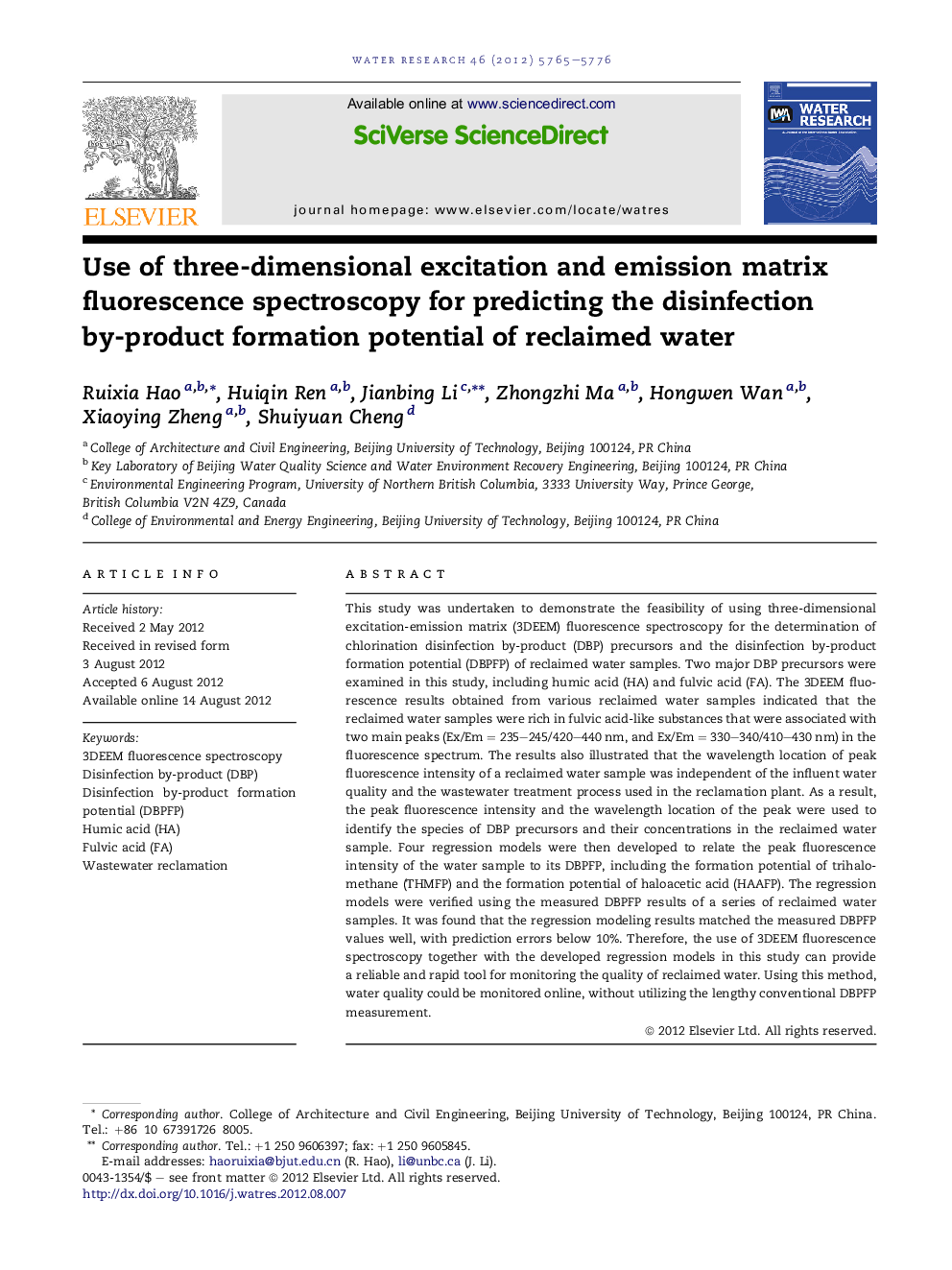| کد مقاله | کد نشریه | سال انتشار | مقاله انگلیسی | نسخه تمام متن |
|---|---|---|---|---|
| 4482614 | 1316864 | 2012 | 12 صفحه PDF | دانلود رایگان |

This study was undertaken to demonstrate the feasibility of using three-dimensional excitation-emission matrix (3DEEM) fluorescence spectroscopy for the determination of chlorination disinfection by-product (DBP) precursors and the disinfection by-product formation potential (DBPFP) of reclaimed water samples. Two major DBP precursors were examined in this study, including humic acid (HA) and fulvic acid (FA). The 3DEEM fluorescence results obtained from various reclaimed water samples indicated that the reclaimed water samples were rich in fulvic acid-like substances that were associated with two main peaks (Ex/Em = 235–245/420–440 nm, and Ex/Em = 330–340/410–430 nm) in the fluorescence spectrum. The results also illustrated that the wavelength location of peak fluorescence intensity of a reclaimed water sample was independent of the influent water quality and the wastewater treatment process used in the reclamation plant. As a result, the peak fluorescence intensity and the wavelength location of the peak were used to identify the species of DBP precursors and their concentrations in the reclaimed water sample. Four regression models were then developed to relate the peak fluorescence intensity of the water sample to its DBPFP, including the formation potential of trihalomethane (THMFP) and the formation potential of haloacetic acid (HAAFP). The regression models were verified using the measured DBPFP results of a series of reclaimed water samples. It was found that the regression modeling results matched the measured DBPFP values well, with prediction errors below 10%. Therefore, the use of 3DEEM fluorescence spectroscopy together with the developed regression models in this study can provide a reliable and rapid tool for monitoring the quality of reclaimed water. Using this method, water quality could be monitored online, without utilizing the lengthy conventional DBPFP measurement.
Figure optionsDownload high-quality image (126 K)Download as PowerPoint slideHighlights
► 3DEEM fluorescence spectroscopy was proposed to determine DBPFP of reclaimed water.
► The reclaimed water sample was rich in fulvic acid-like substances.
► Ex/Em location of fluorescence peak was used for identifying DBP precursor species.
► Regression models were used to calculate DBPFP using peak fluorescence intensity.
► Online monitoring of reclaimed water quality is possible using the proposed method.
Journal: Water Research - Volume 46, Issue 17, 1 November 2012, Pages 5765–5776